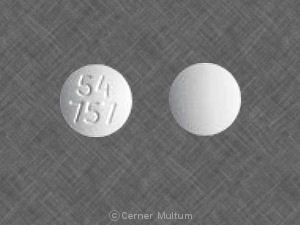
Contents
- 1 Side Effects of Pletal (cilostazol)
- 1.0.1 Important Side Effects of Pletal (cilostazol)
- 1.0.2 Pletal (cilostazol) Side Effects List for Healthcare Professionals
- 1.0.2.1 Clinical Trials Experience
- 1.0.2.2 Postmarketing Experience
- 1.0.2.2.1 Blood And Lymphatic System Disorders
- 1.0.2.2.2 Cardiac Disorders
- 1.0.2.2.3 Gastrointestinal Disorders
- 1.0.2.2.4 General Disorders And Administration Site Conditions
- 1.0.2.2.5 Hepatobiliary Disorders
- 1.0.2.2.6 Immune System Disorders
- 1.0.2.2.7 Investigations
- 1.0.2.2.8 Nervous System Disorders
- 1.0.2.2.9 Renal And Urinary Disorders
- 1.0.2.2.10 Respiratory, Thoracic And Mediastinal Disorders
- 1.0.2.2.11 Skin And Subcutaneous Tissue Disorders
- 1.0.2.2.12 Vascular Disorders
- 1.0.3 Drugs That Interact with Pletal (cilostazol)
- 1.0.4 Summary
Side Effects of Pletal (cilostazol)
Pletal (cilostazol) treats intermittent claudication caused by narrowed leg arteries. This condition reduces blood and oxygen flow to leg muscles, causing pain during walking. Pletal dilates the arteries, improving blood flow and reducing clotting.
Pletal enables longer and faster walking without pain for patients with intermittent claudication.
Common side effects of Pletal include:
- headache,
- abdominal pain,
- diarrhea,
- abnormal stool,
- upper respiratory tract infections,
- runny nose,
- nausea,
- fluid retention,
- dizziness, and
- abnormal heartbeats.
Serious side effects of Pletal include:
- reduced white blood cell and platelet counts, and
- severe skin reactions.
Pletal may interact with drugs like erythromycin, omeprazole, and diltiazem, which increase Pletal’s concentration by inhibiting enzymes that break it down.
- Similar interactions may occur with ketoconazole, itraconazole, fluconazole, miconazole, fluvoxamine, fluoxetine, nefazodone, and sertraline.
- Diltiazem and omeprazole also increase Pletal concentrations. Higher concentrations may lead to toxic effects. In such cases, a dose of 50 mg twice daily is advised.
- Combining Pletal with other drugs that interfere with blood clotting increases the risk of bleeding. High-fat meals increase Pletal absorption.
- Patients taking Pletal should avoid grapefruit juice, as it increases Pletal concentration.
Pletal’s use in pregnancy and breastfeeding has not been well-studied. Consult your doctor before breastfeeding.
Important Side Effects of Pletal (cilostazol)
The most common adverse effects of cilostazol are:
- headache,
- abdominal pain,
- diarrhea,
- abnormal stool,
- upper respiratory tract infections,
- runny nose,
- nausea,
- fluid retention,
- dizziness, and
- abnormal heartbeats.
Other important side effects of cilostazol include reduced white blood cell and platelet counts, and severe skin reactions.
Cilostazol inhibits the enzyme phosphodiesterase III. Similar drugs that inhibit this enzyme have caused death in patients with heart failure.
Pletal (cilostazol) Side Effects List for Healthcare Professionals
The following adverse reactions are discussed in greater detail in other sections of the labeling:
- Patients with Heart Failure
- Tachycardia
- Left Ventricular Outflow Tract Obstruction
- Hematologic Adverse Reactions
- Hemostatic Disorders or Active Pathologic Bleeding
Clinical Trials Experience
- Adverse reactions were assessed in eight placebo-controlled clinical trials involving patients exposed to Pletal (n=1301) or placebo (n=973), with a median treatment duration of 127 days for Pletal and 134 days for placebo.
- Headache was the most frequent adverse reaction resulting in discontinuation of Pletal therapy (3.5% for the 100 mg twice daily dose).
- Other frequent causes of discontinuation included palpitation and diarrhea, both at 1.1% for Pletal (all doses).
- The most common adverse reactions occurring in at least 2% of patients treated with Pletal are shown in Table 1.
Table 1: Most Common Adverse Reactions in Patients on Pletal
| Adverse Reactions | Placebo (N=973) |
PLT 50 mg twice daily (N=303) |
PLT 100 mg twice daily (N=998) |
| Headache | 14% | 27% | 34% |
| Diarrhea | 7% | 12% | 19% |
| Abnormal stools | 4% | 12% | 15% |
| Palpitation | 1% | 5% | 10% |
| Dizziness | 6% | 9% | 10% |
| Pharyngitis | 7% | 7% | 10% |
| Infection | 8% | 14% | 10% |
| Peripheral edema | 4% | 9% | 7% |
| Rhinitis | 5% | 12% | 7% |
| Dyspepsia | 4% | 6% | 6% |
| Abdominal pain | 3% | 4% | 5% |
| Tachycardia | 1% | 4% | 4% |
Less frequent clinical significant adverse reactions (less than 2%) experienced by patients treated with Pletal in the clinical trials and that occurred at a greater frequency in the 100 mg twice daily group than in the placebo group are listed below.
- Body as a whole: fever, generalized edema, malaise
- Cardiovascular: atrial fibrillation, heart failure, myocardial infarction, nodal arrhythmia, supraventricular tachycardia, ventricular extrasystoles, ventricular tachycardia
- Digestive: anorexia, melena
- Hematologic and Lymphatic: anemia
- Metabolic and Nutritional: increased creatinine, hyperuricemia
- Nervous: insomnia
- Respiratory: epistaxis
- Skin and Appendages: urticaria
- Special Senses: conjunctivitis, retinal hemorrhage, tinnitus
- Urogenital: urinary frequency
Postmarketing Experience
The following adverse reactions have been reported post-approval:
Blood And Lymphatic System Disorders
- Aplastic anemia,
- granulocytopenia,
- pancytopenia,
- bleeding tendency
Cardiac Disorders
- Torsade de pointes and QTc prolongation in patients with cardiac disorders (e.g. complete atrioventricular block, heart failure; and bradyarrythmia),
- angina pectoris.
Gastrointestinal Disorders
- Gastrointestinal hemorrhage,
- vomiting,
- flatulence,
- nausea
General Disorders And Administration Site Conditions
- Pain,
- chest pain,
- hot flushes
Hepatobiliary Disorders
- Hepatic dysfunction/abnormal liver function tests,
- jaundice
Immune System Disorders
- Anaphylaxis,
- angioedema, and
- hypersensitivity
Investigations
- Blood glucose increased,
- blood uric acid increased,
- increase in BUN (blood urea increased),
- blood pressure increase
Nervous System Disorders
- Intracranial hemorrhage,
- cerebral hemorrhage,
- cerebrovascular accident,
- extradural hematoma, and
- subdural hematoma
Renal And Urinary Disorders
- Hematuria
Respiratory, Thoracic And Mediastinal Disorders
- Pulmonary hemorrhage,
- interstitial pneumonia
Skin And Subcutaneous Tissue Disorders
- Hemorrhage subcutaneous,
- pruritus,
- skin eruptions including Stevens-Johnson syndrome, skin drug eruption (dermatitis medicamentosa), and rash.
Vascular Disorders
- Subacute stent thrombosis,
- hypertension.
Drugs That Interact with Pletal (cilostazol)
CYP3A4 and CYP2C19 Inhibitors
CYP3A4 Inhibitors
- Strong (e.g., ketoconazole) and moderate (e.g., erythromycin, diltiazem, and grapefruit juice) CYP3A4 inhibitors increase Pletal exposure.
- Reduce Pletal dose to 50 mg twice daily when coadministered with strong or moderate CYP3A4 inhibitors.
CYP2C19 Inhibitors
- Coadministration with CYP2C19 inhibitors (e.g., omeprazole) increases Pletal metabolite exposure.
- Reduce Pletal dose to 50 mg twice daily when coadministered with strong or moderate CYP2C19 inhibitors.
Summary
Pletal (cilostazol) treats intermittent claudication caused by narrowed leg arteries. Common side effects include headache, abdominal pain, diarrhea, abnormal stool, upper respiratory tract infections, runny nose, nausea, fluid retention, dizziness, and abnormal heartbeats. Use during pregnancy and breastfeeding is not well-studied. Consult your doctor before breastfeeding.


